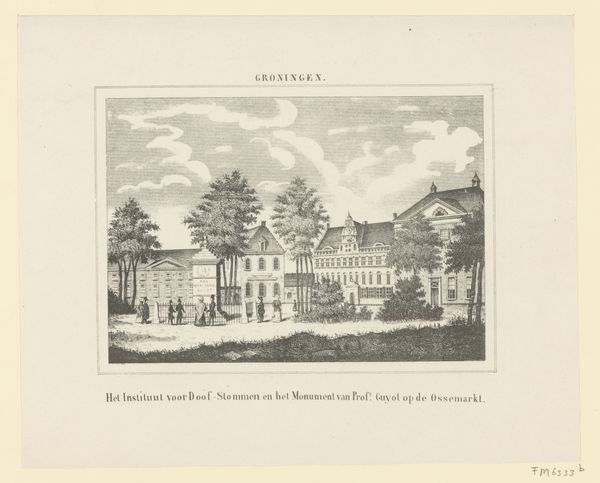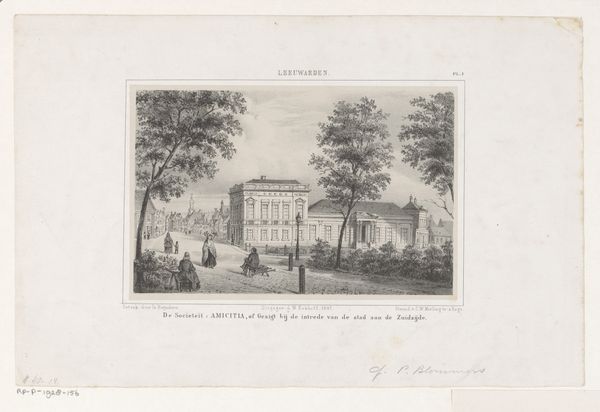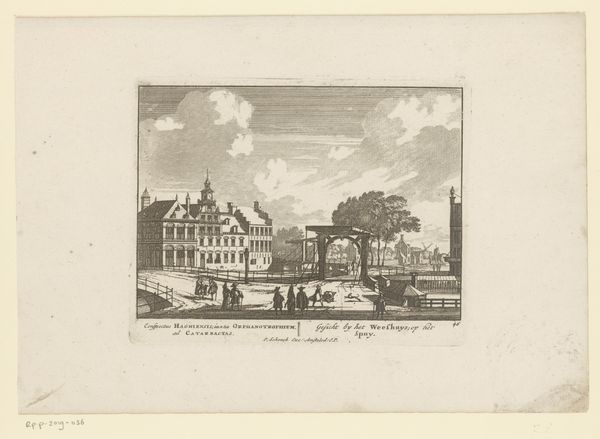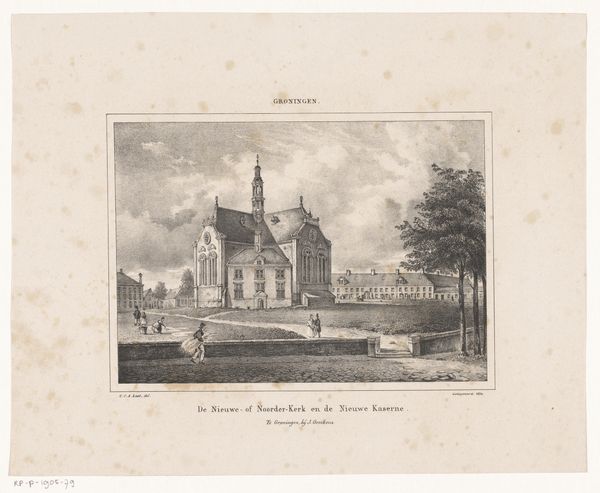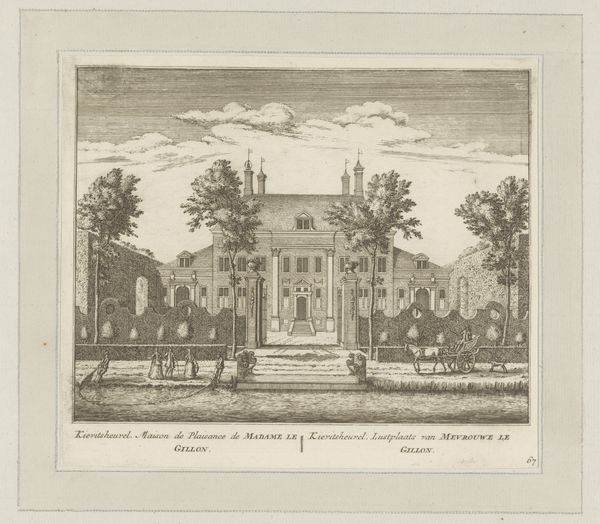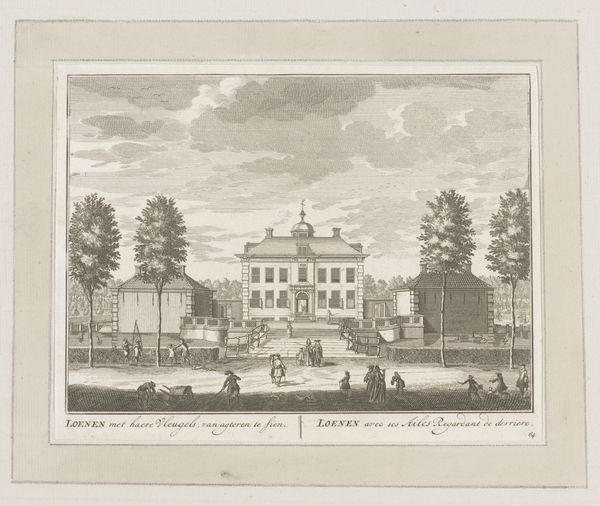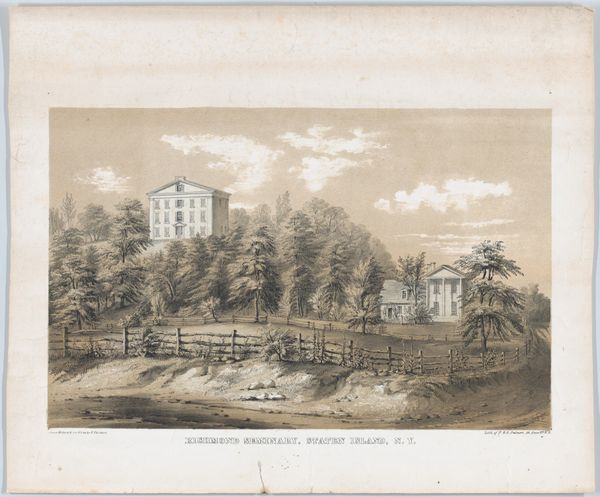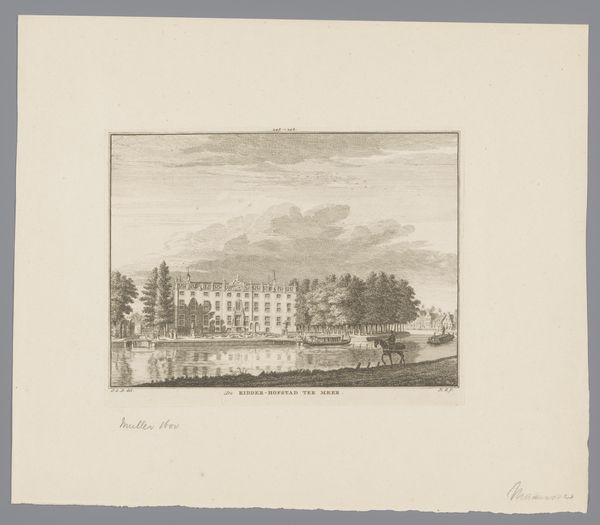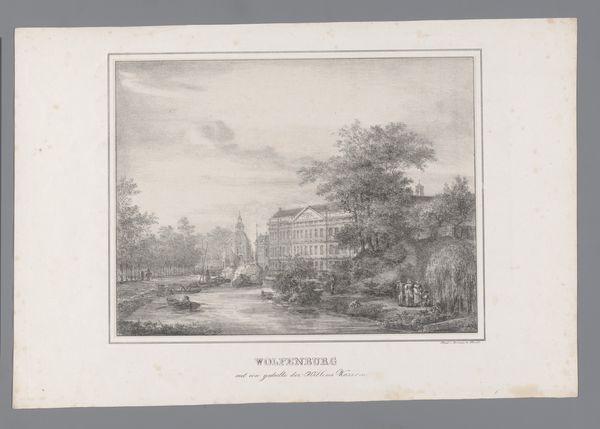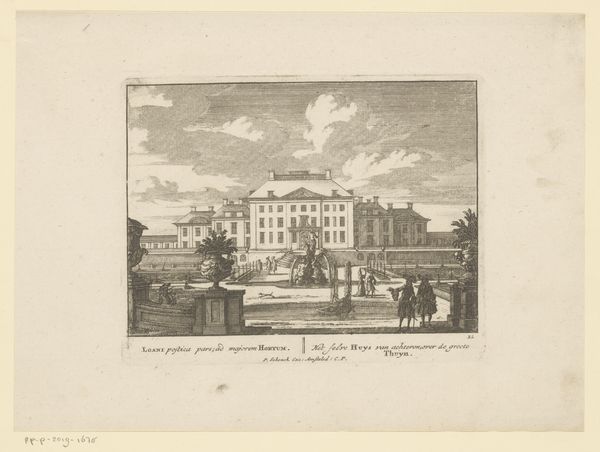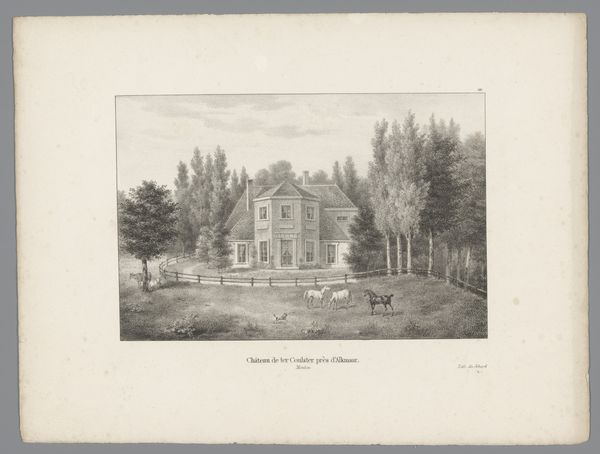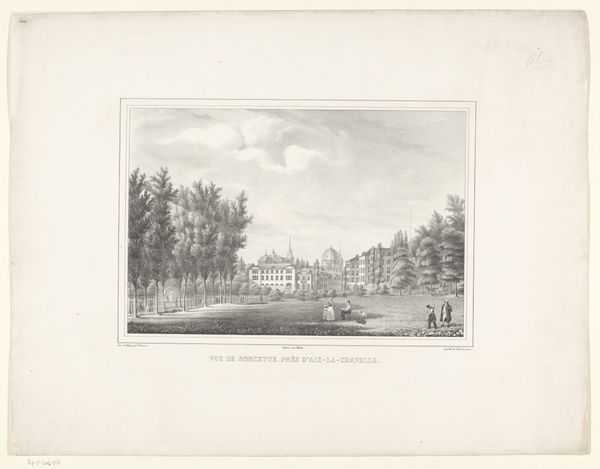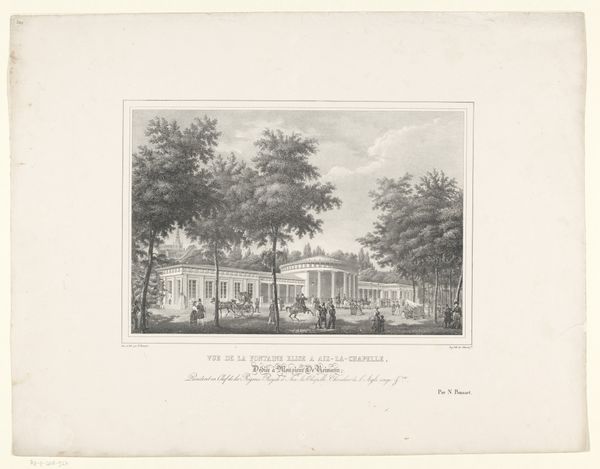
Instituut voor doofstommen en het monument voor Henri Daniel Guyot te Groningen 1834
0:00
0:00
print, engraving, architecture
#
neoclacissism
# print
#
landscape
#
cityscape
#
engraving
#
architecture
Dimensions: height 257 mm, width 335 mm, height 310 mm, width 420 mm
Copyright: Rijks Museum: Open Domain
Editor: So, this engraving by Carel Christiaan Antony Last from 1834 is called "Institute for the Deaf and Mute and the Monument to Henri Daniel Guyot in Groningen." It depicts, unsurprisingly, the Institute. It’s rendered with a delicate touch; you can make out architectural details and figures in a way that gives a snapshot of a city scene. I wonder, what should we know about this representation? Curator: What strikes me immediately is the public role this image plays. It isn't just a pretty picture. The act of creating and disseminating this print demonstrates societal interest in, and perhaps pride surrounding, these institutions for the deaf and mute. The neoclassical style of the buildings depicted suggests a commitment to Enlightenment ideals of reason and progress, visually connecting the institution to those values. Editor: So the image is doing more than documenting the building; it’s part of a broader narrative? Curator: Precisely. Think about how the print circulated: Who saw it? What did they think about the presence of such an institution in their city? Was this viewed as progressive and inclusive? The medium itself—a widely reproducible print—democratizes access to this image, influencing public perception. We have to consider, too, how images of disability were constructed and consumed in the 19th century. Editor: That's a good point. We're not just looking at architecture; we’re looking at the values that society projected onto this building, and the people within it. Curator: And consider the placement of the monument alongside the institute, reinforcing Guyot's legacy within the space itself, as well as within this visual representation. The cityscape tells us less about the city itself than about social priorities within that city at that moment. Editor: I hadn’t considered how much the image reflects society’s attitudes. Thanks. This changes how I see not just this piece but others too. Curator: Exactly! Art rarely exists in a vacuum. Considering how social and cultural factors affect it can open up an entirely new appreciation.
Comments
No comments
Be the first to comment and join the conversation on the ultimate creative platform.
